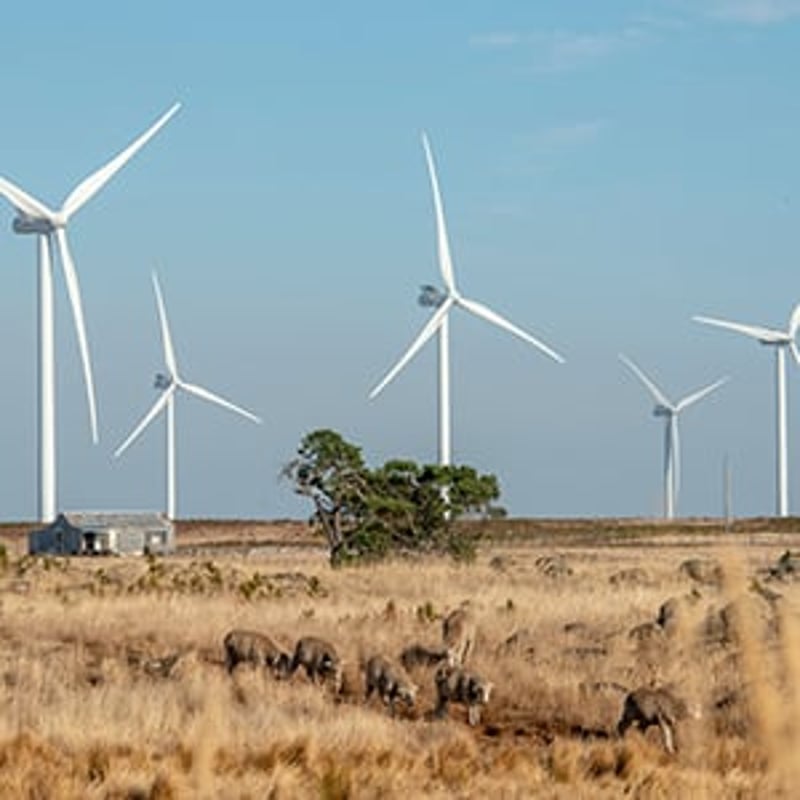THE EDIT
Your monthly briefing on the journey to fossil freedom
Issue #15, Biodiversity, July 2024

The ongoing study in Kattegat ensures that wind power can contribute to reduce climate change and protect bats. Photo: Anders Blomdahl.
Bat behaviour: Essential new insights around wind turbines at sea
What to know: A Vattenfall project is investigating the behaviour and migration of bats over the sea to mitigate collision risks with offshore wind turbines. By deploying ultrasound detectors on the facilities, the project aims to gather crucial data on bat activity.
Why it matters: Understanding how bats interact with offshore wind turbines is essential for balancing renewable energy generation with wildlife protection. Potential solutions, such as targeted turbine shutdowns during peak bat activity periods and using ultrasound to deter bats, could significantly reduce collision risks. This study will provide insights to help design effective measures, ensuring the coexistence of wind farms and bat populations.
Why protecting biodiversity is crucial for the energy transition
Conflicts arise when balancing large-scale energy production with ecosystem preservation. In this article THE EDIT discovers how researchers work to find solutions to promote biodiversity, and learns that cross-sector collaboration, along with data collection and analysis, are vital ways forward. The ultimate goal is always to achieve coexistence.

Restoration is well underway. “We will see a higher overall diversity across a lot of different species groups”, says Vattenfall Environmental Specialist Robin Cox. Photo: Robin Cox
The peatlands of Pen y Cymoedd: From carbon leak to carbon sink
With its 76 turbines, not only does Vattenfall's wind farm in South Wales produce enough electricity to power 15 per cent of Welsh homes, it is also the engine in a 1,500-hectare peatland restoration project. This initiative is turning former forested areas into thriving ecosystems, showcasing the balance between energy production and biodiversity.
Protecting the undiscovered

We are aware of only 10 per cent of the world's biodiversity. The remaining 90 per cent is believed to exist in overlooked settings: organisms invisible to the naked eye, beneath soil, in marine environments, and nocturnal invertebrates. This eye-opening fact is one of many in a report by 64 leading experts, packed with practical strategies for political decision-makers and society to conserve and sustainably use biodiversity on local, national, European, and global levels.
Why protecting biodiversity is crucial for the energy transition
Conflicts arise when balancing large-scale energy production with ecosystem preservation. In this article THE EDIT discovers how researchers work to find solutions to promote biodiversity, and learns that cross-sector collaboration, along with data collection and analysis, are vital ways forward. The ultimate goal is always to achieve coexistence.
News flash
3 x quick updates from the energy world

Renewable energy farming
Australia has been severely affected by climate change, experiencing extreme weather conditions and wildfires. Now, farmers in the country's northeastern state of Queensland hopeto be part of a renewable energy future. (theguardian.com)

Driving the future
Oakland’s new school buses are equipped with vehicle-to-grid technology (V2G), which enables them to both charge and feed power back to the grid, while also improving air quality for school children riding them. (wired.com)

Rooftop wind power
So far, rooftop energy production has been exclusively solarpowered, but now a wind power innovation could change all that. This bladeless, compact turbine could be used on the rooftops of large commercial buildings. (pv-magazine-usa.com)
And finally …
How Coldplay's climate initiative is rocking the music industry
Three years after Coldplay announced a plan to cut the carbon footprint of their tours by 50 per cent, the band have now announced a 59 per cent reduction in CO2 emissions compared to their previous tour. According to the BBC, some 72 per cent of the band's tour waste is reused, recycled or composted, up from 66 per cent in 2023. Energy from solar installations, kinetic dancefloors, and power bikes at venues has risen from 15 to 17 KWh per show, enough to provide power for smaller stage areas and tool charging for the crew.

